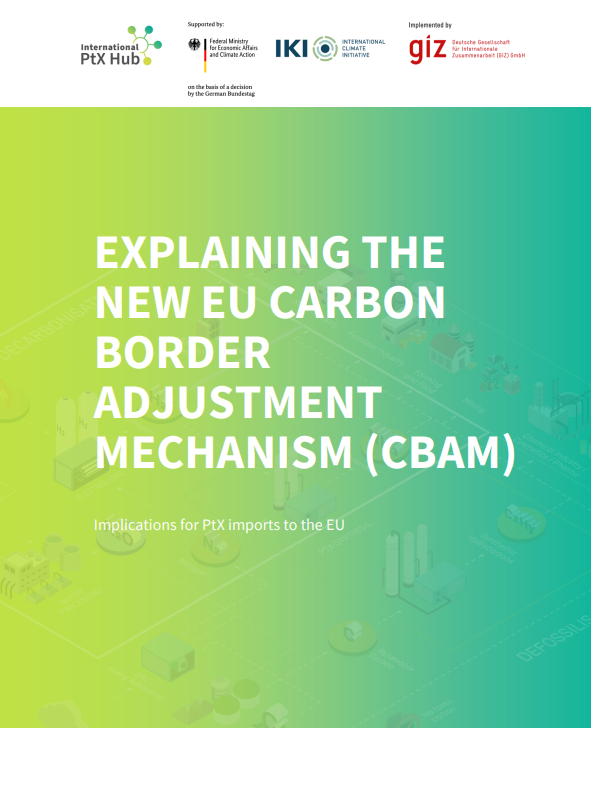Explaining the new EU Carbon Border Adjustment Mechanism (CBAM)
The European Union has introduced the Carbon Border Adjustment Mechanism (CBAM) as a pivotal part of the Fit for 55 Agenda. CBAM aims to level the playing field between imported and domestically produced goods by aligning carbon costs. It addresses challenges in the EU Emissions Trading Scheme and aims for fair competition among producers.
Operators within the EU already report annual emissions, but now importers must report embedded emissions associated with the production of imported goods. CBAM applies to specific sectors and includes products like hydrogen, ammonia, and green steel. Importers of CBAM-covered products must report emissions, with the first reports due by January 31, 2024.
The paper ‘Explaining the new EU Carbon Border Adjustment Mechanism (CBAM): Implications for PtX imports to the EU’ is an essential guide for stakeholders navigating CBAM complexities and understanding its impact on PtX imports into the EU. It explores:
• An overview of the CBAM mechanism and its implementation phases
• Roles and responsibilities of producers within CBAM
• Insights into the calculation of embedded emissions for PtX products, including an example of imported ammonia and crude steel
• Calculation of mark-up on imported ammonia and crude steel induced by CBAM
• A comparison of CBAM reporting rules to other regimes.
The paper was developed by Öko-Institut, adelphi and the Ecologic Institute under the umbrella of the International PtX Hub.
